Calla Pederson
The cabin reaped the benefits of last fall’s harvest on the Furman Farm: from pesto, to salads, to tacos, to roasted veggie sides, the fresh, organic produce was a luxury. Oftentimes, organic foods are seen as too pricey, unnecessary, or a marketing ploy. While words suggesting the food is “natural” are often used to enthrall the consumer, I can attest to the higher quality of organic produce, as can the surrounding environment.
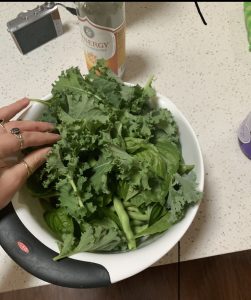


Some background – I am a biology major currently taking my research/writing intensive class. For class, we have to pick a research topic, and mine currently has to do with how more sustainable agricultural practices contribute to biodiversity of the ecosystem of which the farm is a part. Loss of species is happening at an accelerated rate. Since all life on Earth is connected in some way or another, this affects everything in some way, including humans. For example, the increasing extinction rates in biologically diverse ecosystems, such as rainforests, lead to increasing costs to maintain agricultural production, clean air and water, and even human health (libretexts). Although modern society and technology have given the illusion that humans are removed from ecosystems and nature, we still rely on plants for everything – food, medicine, clothes, clean air, and clean water – just to name a few.
Organic farming supports biodiversity and environmental health literally from the ground up. The lack of pesticide, herbicide, and fungicide use all support the life of microorganisms and other important species, like insects, that call the soil home. These species contribute to the nutrient content of the soil, via waste. Microorganisms help decompose organic matter, releasing excess nutrients into the system for use by plants (“Soil Biological Fertility”). Many organic farms allow underlying vegetation to grow, which creates habitats for wildlife (Myers et al., 2019). This contributes to biodiversity on a larger scale. Organic practices also help keep water clean by eliminating use of toxic chemicals (“Environmental Benefits of Organic”). Organic farming even actively fights climate change by sequestering carbon (“Environmental Benefits of Organic”)! As organic carbon matter decomposes, it gets converted to carbon dioxide through respiration, but practices commonly found on organic farms, like conservation tillage, cover cropping, and crop rotation, increase the amount of carbon (organic matter) stored in the soil (**sourced from my mom who works for NRCS).
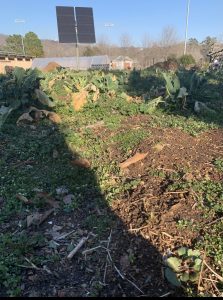
Composting, which is integral to organic farms’ practices like Furman’s, has a plethora of environmental benefits – biodiversity among them. Microorganisms love compost and quicken its decay (“The Top Benefits of Composting”). These microorganisms also assist in aerating the soil, which helps ensure that micronutrients are readily available in their most usable state (“The Top Benefits of Composting”). Composting benefits all aspects of farming, as composted soil is nutrient rich and aids in plant growth, and the soil attracts microorganisms and insects, which further enrich the soil and boost plant growth.
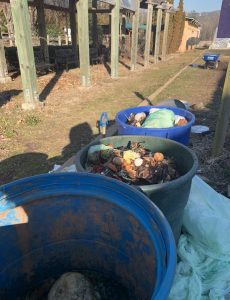
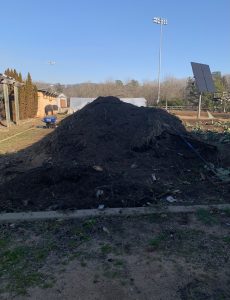
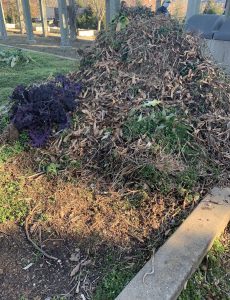
Research suggests that organic farming practices support biodiversity. Tuck et al. found that species richness on organic farms is, on average, 34% richer than on conventional farms. They also found that plants and microbes are among the taxonomic groups that benefit the most from organic farming practices, which makes sense, considering all we have learned about composting and other organic practices (Tuck et al., 2014). The findings from this study suggest that the benefits of organic farming are “robust across sampling sizes” (Tuck et al., 2014). Despite the fact that the Furman Farm is a small one, its positive environmental impacts are substantial. However, they also found that biodiversity increased as the percentage of the landscape consisting of arable land (farmland) increased, so larger organic farms have a greater impact on biodiversity (Tuck et al., 2014). Another study used acoustic indices to compare the abundance and diversity of birds on organic versus conventional farms. Bird-prevalence was used as a marker of biodiversity, and the study found that organic farms had much more diverse sounds and a greater abundance of sounds stemming from animals and other life, which are key to biodiversity (Myers et al., 2019).
One still heavily-contested drawback of organic farming is that it produces significantly smaller yields than conventional agriculture, which is key to feeding the world, especially one with such a rapidly growing population. However, one alternative suggested by Tuck et al. is to combine organic practices with conventional agriculture, or even just have a small portion of a conventional farm operated organically in order to support wildlife and biodiversity more in the area. This issue definitely isn’t going away any time soon, so it is increasingly important that humans develop new (or return to old!) agricultural practices as the population and climate develops and changes.
Work Cited:
“Environmental Benefits of Organic.” OTA, ota.com/organic-101/environmental-benefits-organic#:~:text=Instead%20of%20relying%20on%20synthetic,cover%20cropping%2C%20and%20crop%20rotation.
Libretexts. “21.1: Importance of Biodiversity.” Biology LibreTexts, Libretexts, 15 Aug. 2020, bio.libretexts.org/Bookshelves/Introductory_and_General_Biology/Book%3A_Concepts_in_Biology_(OpenStax)/21%3A_Conservation_and_Biodiversity/21.1%3A_Importance_of_Biodiversity.
Myers, David, Håkan Berg, and Giorgos Maneas. “Comparing the soundscapes of organic and conventional olive groves: A potential method for bird diversity monitoring.” Ecological indicators 103 (2019): 642-649.
“Soil Biological Fertility.” Soil Biological Fertility | Fact Sheets, www.soilquality.org.au/factsheets/soil-biological-fertility#:~:text=Soil%20microorganisms%20(figure%201)%20are,be%20taken%20up%20by%20plants.
“The Top Benefits of Composting.” BioEnergy Consult, 12 Aug. 2020, www.bioenergyconsult.com/top-benefits-of-composting/.